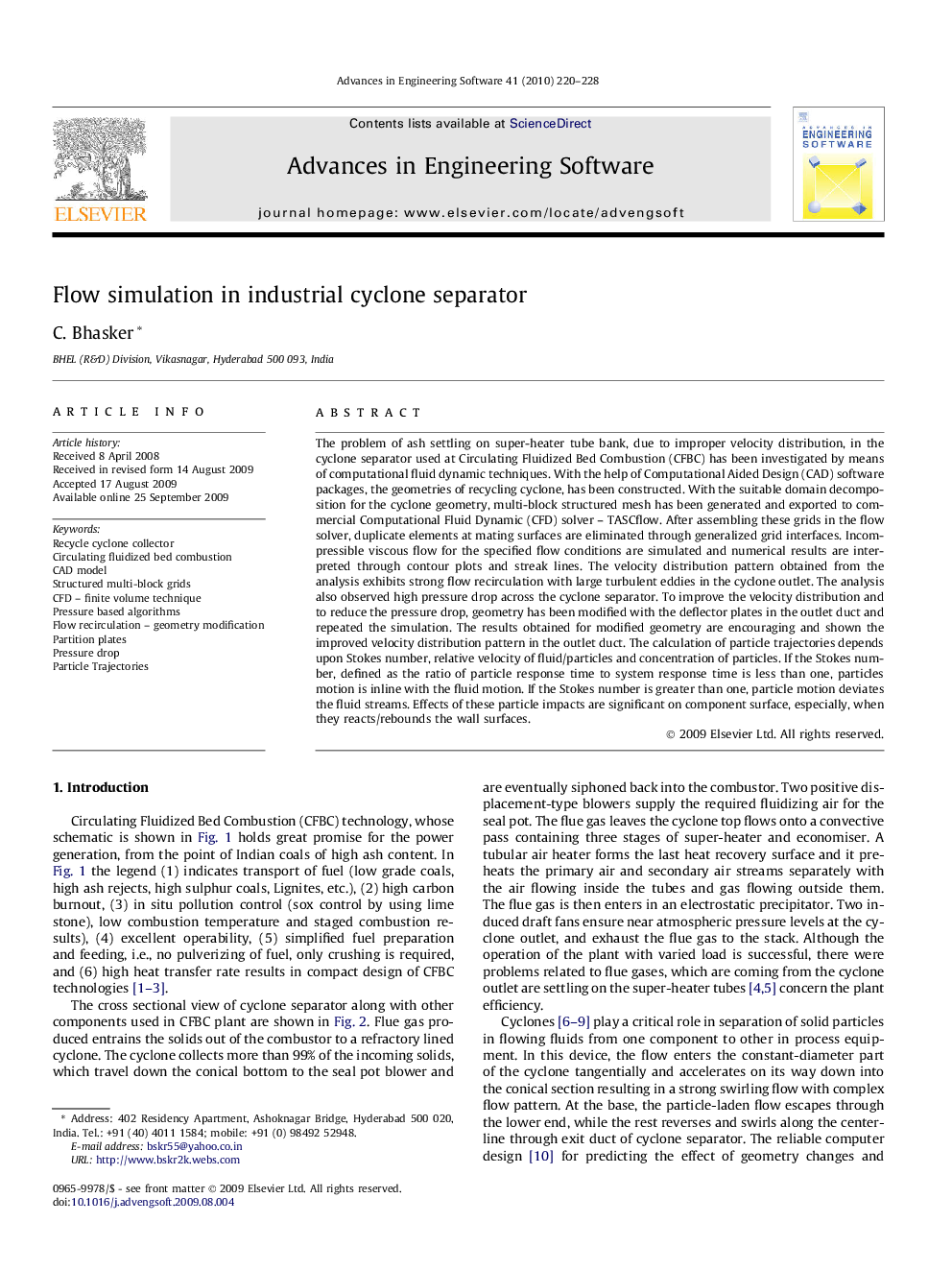| کد مقاله | کد نشریه | سال انتشار | مقاله انگلیسی | نسخه تمام متن |
|---|---|---|---|---|
| 568392 | 876383 | 2010 | 9 صفحه PDF | دانلود رایگان |

The problem of ash settling on super-heater tube bank, due to improper velocity distribution, in the cyclone separator used at Circulating Fluidized Bed Combustion (CFBC) has been investigated by means of computational fluid dynamic techniques. With the help of Computational Aided Design (CAD) software packages, the geometries of recycling cyclone, has been constructed. With the suitable domain decomposition for the cyclone geometry, multi-block structured mesh has been generated and exported to commercial Computational Fluid Dynamic (CFD) solver – TASCflow. After assembling these grids in the flow solver, duplicate elements at mating surfaces are eliminated through generalized grid interfaces. Incompressible viscous flow for the specified flow conditions are simulated and numerical results are interpreted through contour plots and streak lines. The velocity distribution pattern obtained from the analysis exhibits strong flow recirculation with large turbulent eddies in the cyclone outlet. The analysis also observed high pressure drop across the cyclone separator. To improve the velocity distribution and to reduce the pressure drop, geometry has been modified with the deflector plates in the outlet duct and repeated the simulation. The results obtained for modified geometry are encouraging and shown the improved velocity distribution pattern in the outlet duct. The calculation of particle trajectories depends upon Stokes number, relative velocity of fluid/particles and concentration of particles. If the Stokes number, defined as the ratio of particle response time to system response time is less than one, particles motion is inline with the fluid motion. If the Stokes number is greater than one, particle motion deviates the fluid streams. Effects of these particle impacts are significant on component surface, especially, when they reacts/rebounds the wall surfaces.
Journal: Advances in Engineering Software - Volume 41, Issue 2, February 2010, Pages 220–228